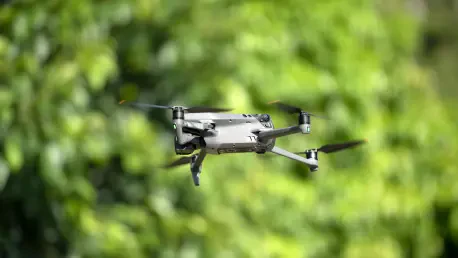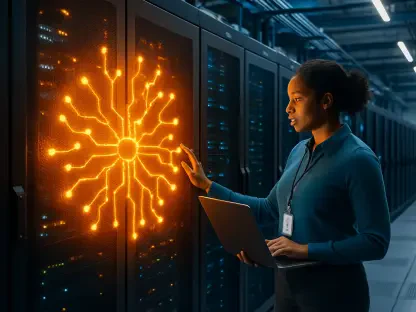In nature, some of the most astonishing acrobats are insects, performing complex aerial maneuvers in bustling environments with ease. This leads to a fascinating question: How do these tiny creatures pull off such feats despite their limited brainpower? The answer lies in a new wave of technological innovation: drones inspired by nature’s flyers. These drones are being designed to navigate similarly complex terrains, opening the door to myriad real-world applications.
Breaking New Ground with Insect-Inspired Navigation
The demand for drones capable of autonomously navigating dense and unfamiliar environments is on the rise. Complex tasks like search and rescue operations, industrial inspections, and sports broadcasting require drones that can swiftly move through unpredictable settings. Traditional methods of drone navigation, which rely on segmented systems for mapping and trajectory planning, often falter in such scenarios. This has prompted researchers to look to nature for solutions, using insects as a model for developing more efficient navigation systems.
Revolutionary Advances in Drone Technology
This groundbreaking approach represents a significant departure from conventional modular drone systems. Key to this transition are artificial neural networks (ANNs) and the principles of differentiable physics, the combination of which significantly enhances a drone’s autonomy and agility. Instead of relying on bulky sensor systems, these ANN models are inspired by the simplistic yet effective cognitive processes observed in insects, such as flies. They allow drones to execute intricate maneuvers using minimal sensor input, much like their insect counterparts do in nature.
Expert Insights and Breakthrough Research
A pivotal study conducted by researchers at Shanghai Jiao Tong University, published in Nature Machine Intelligence, highlights the impact of ANN-based navigation systems. Experts in the field have praised the lightweight nature of these networks, noting their potential for swarm deployment and independent operation without centralized control. The move toward more compact and efficient ANN models is reshaping how drone navigation is approached, suggesting swarms of drones might one day operate autonomously in various landscapes.
Practical Steps for Real-World Application
Implementing insect-inspired navigation requires a strategic blend of simulations and structured environment training. By employing low-resolution depth maps and training drones in virtual settings, developers are equipping drones with the ability to learn from their environments without vast amounts of sensor data. These practical steps pave the way for applications across diverse fields, from disaster response to automated filming, showcasing the tremendous potential of this innovative approach.
A New Era for Drones
Looking ahead, the future of drone technology lies in harnessing the natural intelligence found in insect navigation. Insect-inspired drones promise to revolutionize fields ranging from emergency response to global logistics. By integrating lightweight ANNs and differentiable physics, engineers and researchers are shaping a new era for unmanned aerial vehicles—one marked by heightened agility, autonomy, and efficiency. As science continues to learn from nature’s designs, the boundaries of what’s possible in drone navigation will only expand, offering a glimpse into a future where drones operate as seamlessly as the insects that inspire them.









